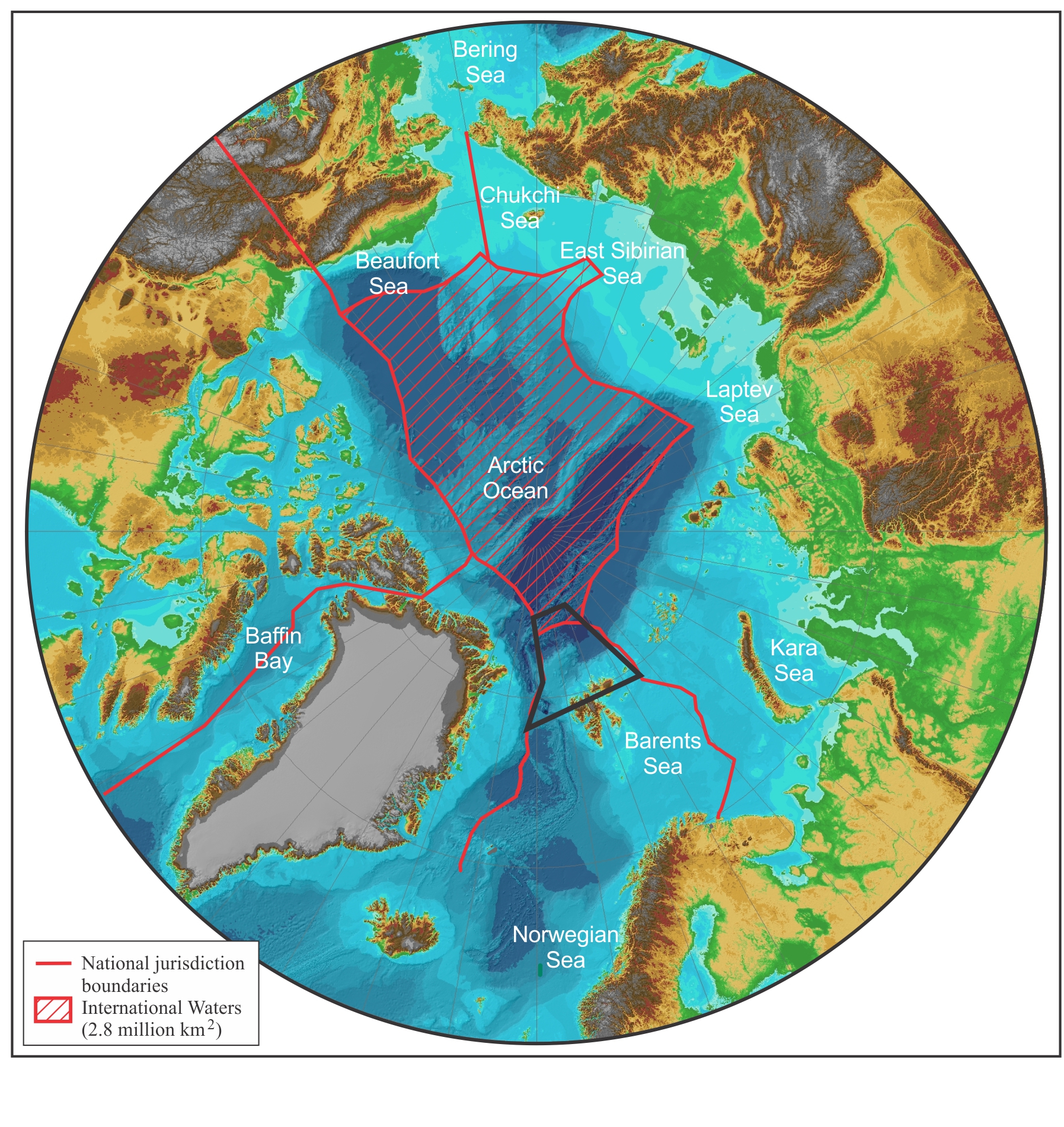Focus area
The main study area is the waters under Norwegian jurisdiction in the Arctic Ocean (see map below). This region covers the main deep gateway for the inflow of warm Atlantic Water and heat to the Arctic Ocean (Schauer et al., 2002).
An increase in this heat transfer will have profound implications for the marine environment and the living marine resources. In the recent years both Atlantic cod (Kjesbu et al., 2014) and Atlantic mackerel (Berge et al., 2015) have shown substantial northward extensions of their northernmost know occurrence, and both species have been observed west or north of Spitsbergen. Northward expansions of the boreal fish communities have also been observed in the northern Barents Sea (Fossheim et al., 2015). Northward expansion of boreal species is more likely on the Atlantic side of the Arctic Ocean than on the Pacific side (Drinkwater, 2011; Hollowed et al., 2013).

SI_ARCTIC will address the research challenges by conducting field observations, review of historical data and literature, utilizing data from satellites and other auxiliary sources, and numerical modelling. Initial observational data will be obtained by expanding already ongoing surveys covering the Barents Sea, conducting baseline studies in the focus area during 2014-2016. The field activities will proceed in a step-wise manner, not necessarily using the entire methodological and instrumentation toolbox from day one. The approach of covering the ice free part of the Arctic Ocean north of Svalbard nearly at the same time as the shallower Barents Sea is covered, allows examining the interplay between the shelf and the deep Arctic Ocean, which is crucial for understanding both regions
References
Berge, J., Heggland, K., Lonne, O.J., Cottier, F., Hop, H., Gabrielsen, G.W., Nottestad, L., Misund, O.A., 2015. First Records of Atlantic Mackerel (Scomber scombrus) from the Svalbard Archipelago, Norway, with Possible Explanations for the Extension of Its Distribution. ARCTIC, 68, 1: 54-61.
Drinkwater, K.F. 2011. The influence of climate variability and change on the ecosystems of the Barents Sea and adjacent waters: Review and synthesis of recent studies from the NESSAR project. Progress in Oceanography, 90:47-61.
Fossheim, M., Primicerio, R., Johannesen, E., Ingvaldsen, R.B., Aschan, M., Dolgov, A.V. 2015. Recent warming leads to rapid borealization of fish communities in the Arctic. Nature Climate Change, doi: 10.1038/NCLIMATE2647.
Hollowed, A., Planque, B., and Loeng, H. 2013. Potential movement of fish and shellfish stocks from the sub-Arctic to the Arctic. Fisheries Oceanography, doi: 10.1111/fog.12027.
Kjesbu, O.S., Bogstad, B., Devine, J.A., Gjøsæter, H., Howell, D., Ingvaldsen, R.B., Nash, D.M., Skjæraasen, J.E., 2014. Synergies between climate and management for Atlantic cod fisheries at high latitudes. Proceedings of the National Academy of Sciences of the United States of America, www.pnas.org/cgi/doi/10.1073/pnas.1316342111.
Schauer, U., Loeng, H., Rudels, B., Ozhigin, V.K., and Dieck, W. 2002. Atlantic Water flow through the Barents and Kara Seas, Deep-Sea Research, I, 49: 2281-2298.
